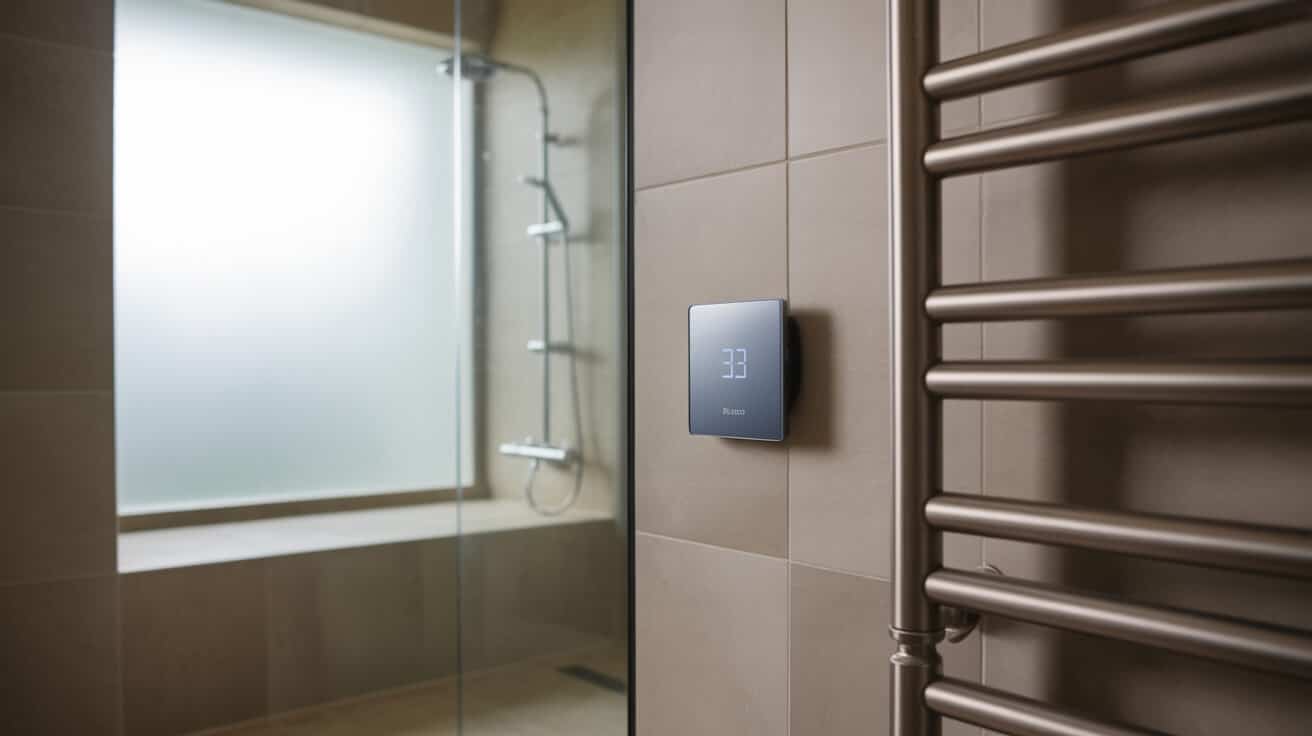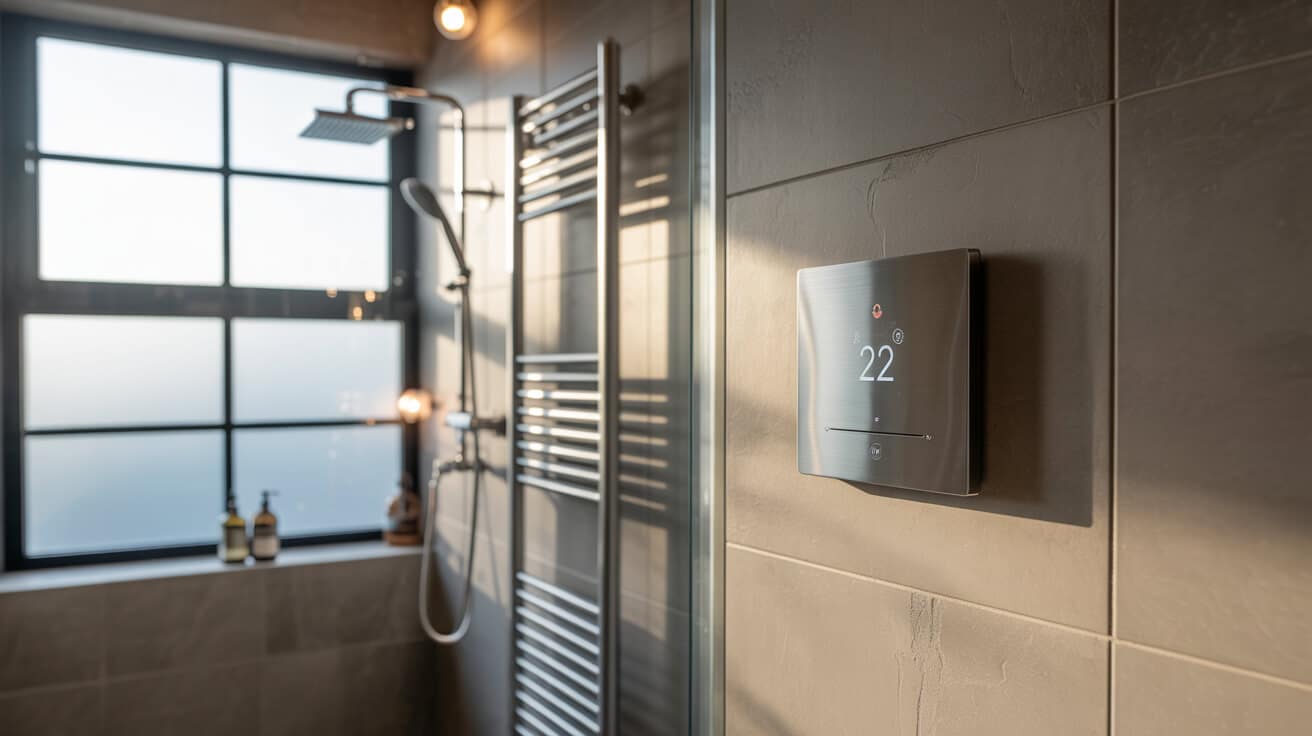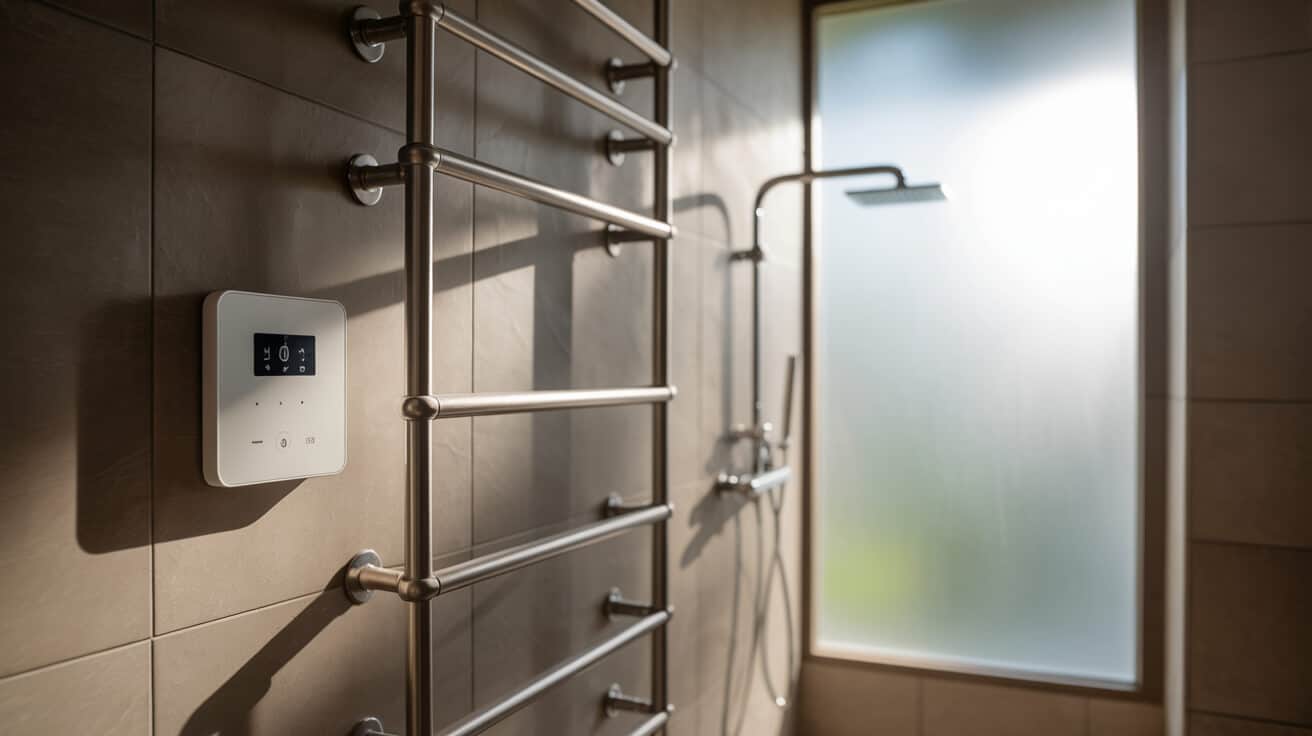A wireless RF thermostat represents a class of environmental controls used to optimise the operation of your heating system through non-wired, radio-based signalling. These thermostats function by detecting room temperature, enabling schedule programming, and communicating instructions to your boiler or heating hardware discretely and securely. Their key distinction from legacy thermostatic devices is the untethered link between the user interface and active equipment, which means you are no longer limited in placing thermostats only where wires can reach. This flexibility supports greater comfort accuracy, easier property retrofitting, and a more seamless experience if your organisation manages multiple units or seeks regulatory compliance. Companies like Plumbers 4U frequently specify, instal, and maintain advanced wireless controls to help your home or business reduce costs, improve comfort, and maintain compliance.
Etymology or name origin
The concept of the thermostat dates to the late 19th century, with the name evolving from the Greek “thermo” (heat) and “stat” (to stand/maintain). Early room thermostats were exclusively mechanical, acting as switches triggered by thermal expansion. The “wireless” qualifier denotes devices that do not require physical wiring between sensor and actuator, with “RF” (radio frequency) specifying how these thermostats achieve wireless communication—transmitting encoded signals over standardised (often 433 MHz or 868 MHz) radio bands. Related nomenclature in your system documentation may include “programmable stat,” “controller,” “receiver module,” or, for smart-enabled units, “hub” or “gateway.”
Overview / context
In heating and plumbing applications, environmental controls mitigate the risk of under- or overheating spaces, coordinate schedules across zones, and facilitate energy conservation. Traditional hardwired thermostats, while functional, pose limitations in retrofit scenarios or where your furnishing, wall types, or system upgrades require flexibility. Wireless RF thermostats disrupt these constraints, empowering your property with the means to mount, relocate, or completely refactor heating control logic without resorting to invasive building works. As energy efficiency pressures and compliance requirements escalate—especially within the private rental sector and the commercial market—wireless controls form an essential vector for property modernization, user empowerment, and cost savings. Their widespread acceptance is further amplified by the convenience of battery-based transmitter operation and seamless integration with both conventional and advanced heating appliances.
History
Mechanical origins
The genesis of the room thermostat is rooted in early mechanical systems utilising bimetal strips, expansion bulbs, or vapour-filled bellows—each of which controlled switching via direct, local actuation. These straightforward systems delivered basic temperature stability yet restricted location and system flexibility due to reliance on hardwiring and single-point sensing.
Electronic and programmable emergence
In the latter half of the 20th century, advances in solid-state electronics enabled digital sensing, programmable schedule logic, and straightforward temperature setpoint adjustment, making thermostats more precise and adaptable. Nonetheless, the transmission of user commands or environmental data still depended on physical wiring.
Development of RF controls
Rising demand for increased comfort, system complexity, and ease of installation drove the advent of wireless RF thermostats in the early 21st century. The maturing of secure, energy-efficient short-range RF modules allowed controllers to communicate with receivers or actuators through walls and floors, expanding installation options and reducing time and cost. This transformation was particularly influential in geographies with challenging construction styles or high levels of rental turnover where flexible placement and fast reconfiguration were needed.
Regulatory and technological milestones
From 2005 onward, building codes and energy management policies, including the UK’s Building Regulations Part L and later “Boiler Plus” standards, emphasised the need for more responsive, programmable, and modulating heating controls. Manufacturers responded with wireless and multi-zone models, integrating advanced scheduling, compatibility with OpenTherm modulation, and anti-tamper features to address both energy and user safety.

Concept / description
A wireless RF thermostat consists of two primary components: a transmitter/controller and a receiver/actuator. The transmitter measures ambient temperature within your space and, following either user settings or an automated schedule, relays control signals to the receiver linked to your boiler, zone valve, or electric heater. This communication typically occurs over licence-free RF bands (such as 433 MHz or 868 MHz), with encoded digital packets triggering precise switching or command sequences.
Transmitter and user interface
Transmitter devices integrate precision thermistors or digital sensors, a programmable logic controller, and a user interface—either through tactile buttons or touchscreens. Displays range from classic segment LCDs to colour, backlit, or app-linked feedback. Some models provide occupancy or learning features, such as adaptive scheduling or boost/pause cycles, allowing you to tailor heating behaviour for dynamic comfort or fuel savings.
Receiver and actuation
Receivers, installed near the heating appliance or control panel, decode and verify incoming signals, then actuate relays, zone valves, or modulating burners in line with the transmitted command. Wiring is typically routed for permanent power and signal input, and some receivers offer multi-channel or zoning support for complex property layouts.
Power and maintenance
Transmitter power is most often provided by replaceable or rechargeable batteries, with typical endurance of 1-3 years. Receivers draw energy either via mains or directly from the connected appliance. User prompts or warnings for low-battery states are standard features. Maintenance is generally limited to periodic battery replacement and occasional re-pairing or resetting during heating system updates.
Table: Core Components and Functions
| Component | Function | Typical Location |
|---|---|---|
| Transmitter (stat/controller) | Senses ambient temp, sends command signals, hosts user interface | User’s chosen location |
| Receiver/relay | Receives, verifies, actuates heating system switching | Near boiler/manifold/zone valve |
| RF module | Encodes/decodes control signals | Embedded in both |
| Power supply (batteries/mains) | Enables wireless function and persistent monitoring | Transmitter/receiver |
| User interface (display/buttons) | Allows scheduling, override, and programing | Transmitter |
Functionality / purpose / applications
Wireless RF thermostats provide fundamental improvements in heating management, bringing quantifiable benefits across private homes, rental units, and commercial sites.
Domestic deployment
The ability to position your thermostat wherever is optimal—regardless of legacy cabling or wall types—suits both initial builds and renovation projects. In homes, users can assign the thermostat to the most used living space, move it seasonally, or introduce zoning for granular comfort and efficiency. Battery-powered stats allow relocation without disruption or additional finishing work.
Multi-occupancy and rental property management
Landlords and managing agents are required to provide compliant heating and optimised control for tenants. Wireless thermostats facilitate rapid switch-outs between tenancies, minimising downtime and costly works. They also support documentation for regulatory checks and compliance audits, meeting standards such as “Boiler Plus.” If you operate multi-flat conversions or blocks, central wireless controls can be configured to match zoning and costallocation requirements.
Commercial premises and facilities
Offices, hospitality venues, and larger estate properties frequently require adaptive heating for variable occupancy and schedule patterns. Wireless RF thermostats enable you to manage comfort for each zone or area, integrate with underfloor heating (UFH) manifolds, or adapt control to specific business hours and shift cycles. Some RF stats are equipped for multi-channel or multi-zone setups, supporting seamless retrofitting and streamlined facilities management.
Energy optimization and scheduling
By empowering users to programme week-by-week, day-by-day, or even hour-by-hour heating cycles, wireless thermostats help your property avoid wasted heat, minimise idle boiler cycles, and implement quick stops for absentee periods. Advanced modes include eco, holiday, boost, and adaptive-recovery for maximum flexibility. Anti-frost features and remote overrides allow protection of assets in unoccupied buildings or lines at risk of freezing.
Classifications / types / variants
Wireless RF thermostats vary in sophistication, compatibility, and deployment scope.
Programmability spectrum
- Manual digital: Basic set-point, up/down temp, no schedule.
- Programmable: Daily/weekly programmable, multi-profile, vacation/boost features.
- Learning/adaptive: Automatically adjusts set-points based on occupancy or historic data.
Control and system integration
- Single channel: Controls one circuit/device such as a combi boiler or one radiator loop.
- Dual/multi-channel: Enables multi-zone setups, manages dual-fuel (radiators and UFH), or supports both heating and hot water outputs.
Protocols and brand ecosystems
- Proprietary RF: Brand-locked, requiring matched transmitters and receivers (e.g., Hive, Drayton).
- OpenTherm compatible: Can regulate modulation for advanced boilers, not just on-off switching.
- Universal/retrofit: Designed to replace hardwired stats in most existing installations without boiler-specific constraints.
Zoning and targeted applications
- Room-level wireless TRV controllers: Offer direct wireless management of radiator valves.
- Commercial/industrial multi-zone: Industrial-grade RF stats for larger premises and facilities; extended range, turbo-relaying, and zone coordination.
Table: Key Types of Wireless RF Thermostats
| Type | Programming | Output Channels | Protocols | Typical User |
|---|---|---|---|---|
| Manual Digital | No | 1 | Proprietary | Homeowner |
| Programmable | Yes | 1–2 | Proprietary/Open | Landlord, Tenant |
| Multi-zone | Yes | 2–6+ | Open, Proprietary | Facilities Manager |
| Advanced Mod | Yes | 1–2 | OpenTherm | Energy-conscious org |
Systems / tools / methodologies
Core system devices
Efficient wireless heating relies on the synergy of transmitter, receiver, and switching actuators. Signal repeaters and range extenders can supplement installations in large or challenging properties, ensuring robust communication. Integrated TRVs and zone controls expand the granularity of temperature control for complex estate layouts.
Professional tools
- Signal/coverage testers: Identify RF coverage gaps or interference zones before final placement.
- Diagnostic handsets: Used for troubleshooting or pairing complex setups, especially multi-zone or integrated systems.
- Installer guidance packs: Documentation and online tools to guide your installation, configuration, and post-instal testing.
Stepwise installation methodology
- Site survey and device selection,
- Transmitter placement and battery fit,
- Receiver installation—wired to plant or actuator, tested for relay performance,
- Pairing and initial schedule programming,
- RF signal strength assessment; use of extenders if needed,
- Full system test—at multiple set-points, over expected property occupancy patterns,
- User demonstration and handoff, with annotated documentation.
Maintenance and update cycles
Scheduled battery changes, annual system checks aligned with boiler service, and firmware/software updates (where enabled) preserve long-term reliability and compliance, as supported by companies such as Plumbers 4U.

Stakeholders / entities involved
User and management personas
- Homeowners and tenants: Direct manufacturers of comfort management, responsible for device use, basic maintenance, and schedule adjustment.
- Landlords and letting agents: Custodians of compliance, contractual fulfilment, and ongoing investment in cost-saving upgrades.
- Facilities and property managers: Oversee deployment, monitoring, and system lifecycle for large or multipurpose buildings, responsible for tenant support and regulatory documentation.
Technical and trade participants
- Heating engineers and professional installers (including those from Plumbers 4U): Specify, instal, and service devices while ensuring compliance and safety.
- Building and plumbing companies: Integrate thermostatic controls into new-build packages, refurbishments, or efficiency upgrade contracts.
- Component manufacturers and suppliers: Provide product lines, warranties, support literature, and innovation feedback.
Standards and regulatory bodies
- Industry certifiers and associations: Set minimum standards for safety, interoperability, and usability.
- Government regulatory agencies: Define policy, regulate trade practices, and enforce mandatory compliance (e.g., Building Regulations, CE/UKCA).
Legal / regulatory / ethical considerations
Regulatory landscape
- Building Regulations Part L (UK): Mandates zoning and programmable thermostatic control in most new installations or major upgrades.
- “Boiler Plus” standards: Require time and temperature control, as well as advanced efficiency features.
- Part P (electrical safety): Any wiring to mains or fixed networks must be completed or certified by a qualified professional.
Product and installation standards
- CE/UKCA compliance: Products must be tested and certified for safety, electromagnetic compatibility, and RF transmission.
- ERP directive adherence: Controls should support energy labelling and meet EU/UK conservation goals.
Data and privacy
Smart-enabled wireless stats generate usage data and possibly occupancy patterns. User data must be managed in accordance with privacy best practices and regulatory guidance, with options for data deletion or anonymization provided as standard.
Ethical installation and communication
Professional obligation extends to clear disclosure of device function, expectations for maintenance, and user support. Safety, equity of access, and user autonomy are emerging considerations, especially in the provision of controls for residents with disabilities or English as a second language.
Performance metrics / data / measurements
Communication and reliability
- Signal range: Standard issue models provide reliable communication over 20–30 metres, though steel construction, concrete floors, or multiple partitions may limit this, requiring site-specific assessment.
- Command response: Relay actuation and plant feedback typically occur within seconds of user input, meeting modern expectations for near real-time feel.
- Battery life: Most batteries last one year minimum, though digital display brightness and frequent programme adjustment can reduce this range.
- Interference resilience: Models are rated for varying immunity to household RF/EM sources, from Wi-Fi routers to microwave ovens.
User experience and accuracy
- Setpoint precision: Thermostats are expected to maintain ambient temperature within ±0.5°C of user setting under controlled test conditions.
- Programming retention: Memory retention through power outages (via flash/NV storage) and reliable schedule reversion are now standard.
Support and maintenance logging
Best practice embraces device serial and installation dates, scheduled reminders for battery changes and checks, and centralised records in managed properties, all monitored and maintained efficiently through service frameworks like those used by Plumbers 4U.
Challenges / barriers / limitations
Physical and technical challenges
- RF interference: Electromagnetic noise from other domestic appliances, signal reflection, and attenuation limit operational range in some settings.
- Structural complexity: Properties with multiple stories, extensions, or dense masonry may experience weak signals, requiring repeaters or alternate placement.
- Integration gaps: Disparate legacy plant and proprietary boiler control interfaces can hinder plug-and-play compatibility.
Adoption and behavioural issues
- User inertia: Longstanding routines or lack of technical literacy can limit uptake or correct use.
- Knowledge gaps among property managers: May lead to compliance oversights or underutilised investment.
- False economy from low-cost imports: Non-certified products may lack reliability, safety, or regulatory conformance, creating liability or performance risk.
Policy and regulatory friction
- Frequently updated standards: Regulatory adjustments can rapidly render acceptable devices or methods non-compliant, necessitating ongoing investment.
- Public sector complexity: Different municipal or housing association requirements may complicate implementation, documentation, and support.
Impact / influence / legacy
Wireless RF thermostats have transformed the expectations and management of indoor comfort, energy stewardship, and regulatory fulfilment.
- Energy Savings: Data from numerous retrofit studies indicates typical reductions in heating costs and carbon footprint of 8–20% from programmable wireless upgrades.
- Property value and compliance: Certified systems elevate property management prestige and support asset sale or transfer by demonstrating proactive compliance.
- Tenant and staff wellbeing: Responsive controls contribute to reduced health complaints and improved occupational satisfaction in workplaces.
- Safety improvements: Remote control negates the need for occupants to access hazardous plant locations, and anti-frost/boost features protect against cold risks.
- Catalyst for innovation: Proliferation of wireless stats accelerates modular heating system design, supporting new service models for companies like Plumbers 4U.
Future directions, cultural relevance, and design discourse
Wireless RF thermostat technology sits at the intersection of design innovation, policy evolution, and cultural adaptation.
- Technological trajectory: Upgrades in chip efficiency, error correction, and spectrum management promise further range and reliability improvements. Expect increasing emphasis on adaptive algorithms capable of learning your occupancy patterns and climate conditions for predictive comfort management.
- Regulatory outlook: Minimum standards for zoning, programmable logic, and efficiency are likely to be enhanced, with greater harmonisation between the UK, EU, and international frameworks. Ongoing training and certification upgrades for installers maintain market quality and safety.
- Accessibility and inclusion: Thoughtful interface design, multilingual documentation, and support for residents with sensory or mobility impairments will drive the next wave of product development.
- Cultural symbolism: Wireless heating controls have become icons of modernity, signalling successful adaptation to sustainable living and greater individual autonomy over environments.
- Design conversation: Architects and property developers increasingly view thermostatic controls as integral elements of spatial design, balancing aesthetics, system logic, and environmental responsibility for future-focused development.

